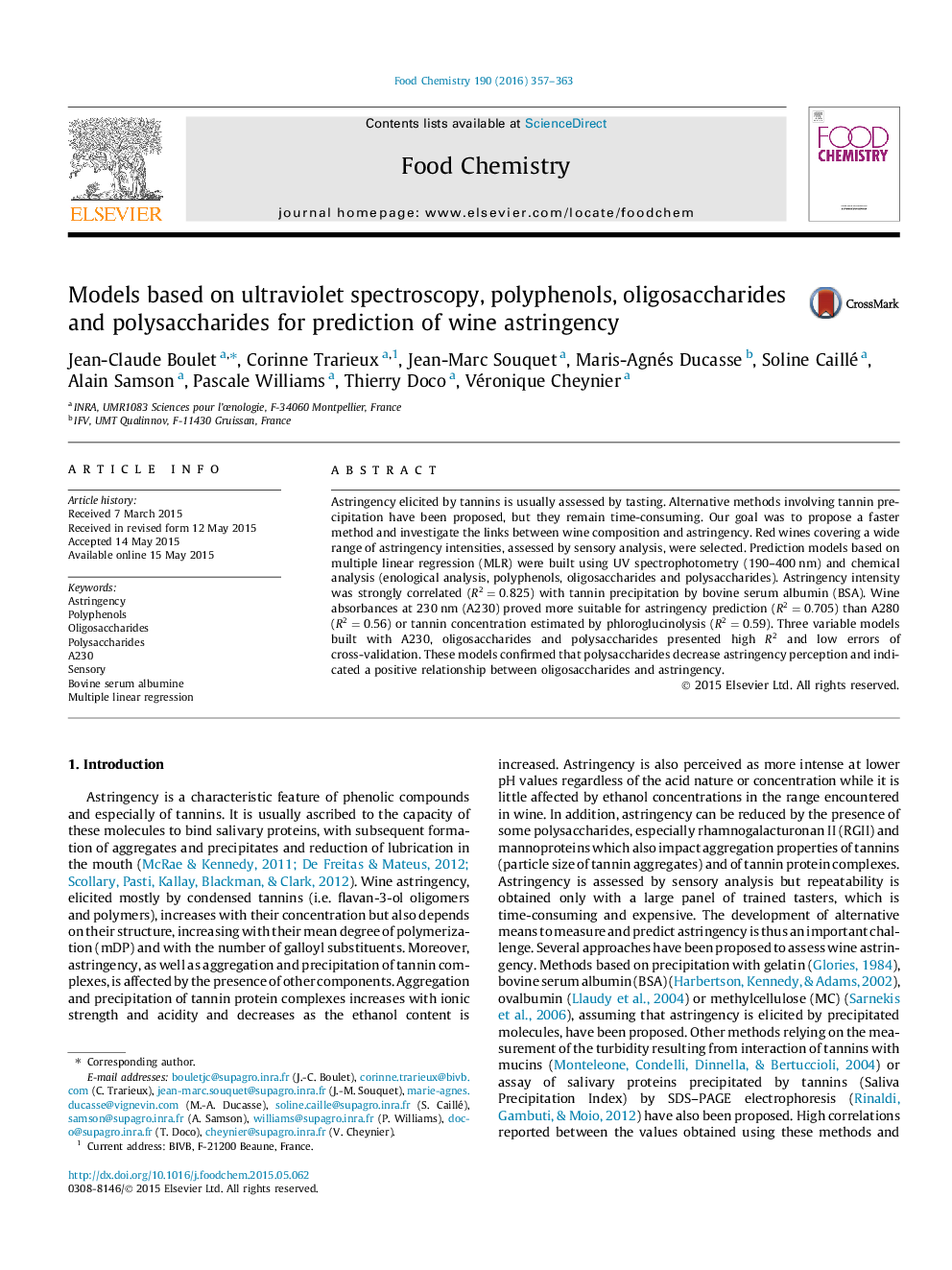| Article ID | Journal | Published Year | Pages | File Type |
|---|---|---|---|---|
| 7590549 | Food Chemistry | 2016 | 7 Pages |
Abstract
Astringency elicited by tannins is usually assessed by tasting. Alternative methods involving tannin precipitation have been proposed, but they remain time-consuming. Our goal was to propose a faster method and investigate the links between wine composition and astringency. Red wines covering a wide range of astringency intensities, assessed by sensory analysis, were selected. Prediction models based on multiple linear regression (MLR) were built using UV spectrophotometry (190-400Â nm) and chemical analysis (enological analysis, polyphenols, oligosaccharides and polysaccharides). Astringency intensity was strongly correlated (R2=0.825) with tannin precipitation by bovine serum albumin (BSA). Wine absorbances at 230Â nm (A230) proved more suitable for astringency prediction (R2=0.705) than A280 (R2=0.56) or tannin concentration estimated by phloroglucinolysis (R2=0.59). Three variable models built with A230, oligosaccharides and polysaccharides presented high R2 and low errors of cross-validation. These models confirmed that polysaccharides decrease astringency perception and indicated a positive relationship between oligosaccharides and astringency.
Keywords
Related Topics
Physical Sciences and Engineering
Chemistry
Analytical Chemistry
Authors
Jean-Claude Boulet, Corinne Trarieux, Jean-Marc Souquet, Maris-Agnés Ducasse, Soline Caillé, Alain Samson, Pascale Williams, Thierry Doco, Véronique Cheynier,
